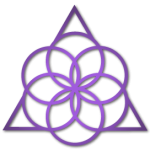A common question by Anusara yoga students who first experience Bowspring is, “What Happened to the Kidney Loop?! I was just taught last week in my Anusara yoga class to apply Kidney Loop and take the back of the floating ribs backward until they line up with the back of the pelvis. Now Bowspring is saying to draw the T-12 vertebrae, at the base of the ribs, inward and upward in a uniform arch with the top of the lumbar. So, I am confused!”
Yes, I understand your confusion, so please allow me to explain…
The Origin of The Loops
In 1995, I proposed a system of postural “Loops,” which became a distinguishing alignment element of Anusara yoga. The general idea came to me after studying the idea of “Ovals” in the form of the body from the father of Polarity Therapy, Dr. Randolph Stone. I clearly saw that the body had clear segments: neck, upper back, lower back/pelvis, thighs, lower legs, and feet, which were like interlocking gears that turned in counter rotations to best align the body when standing. I took the premise that over time the aging body would sag and the curves of the spine would become more pronounced:
- the neck and the lower back curves would become excessively arched
- the upper back and shoulders would round forward
- the top of the thighs would push forward
- the knees would tend toward hyperextension
- and the base of the shin just above the ankle would push forward.
So, the flow of the 7 Loops in the body would counter this tendency of aging, and so good alignment of particularly the spine, shoulders and hips, could be established in any pose.
T-12 Should Not Poke Out!
Today I realize that my intentions for elongating the back of the neck with Skull Loop, and for stabilizing the relatively mobile lumbar curvature with Kidney Loop, were based on old postural paradigms. One of the old posture ideas that I held was that the waistline/belly area was muscularly weak and unstable on most people so they would tend to collapse into their lower back with hyperlordosis or “swayback”. Certainly, Kidney Loop helps prevent compression in the lumbar for a swaybacked student, who tends to shear the lower back forward while exhibiting a lax, protruding belly.
However, my revised perspective is that the neck and the lower back curves actually tend more toward flat than overarched in the majority of the population under 50 years old. So, creating uniform lordotic curves in these areas is more optimal than reducing the curves. Also, one of the most common spinal misalignments, even in swaybacks, is that T-12 tends to poke backward and stick out compared to the top of the lumbar. So any postural emphasis to take the sides of the waistline backward and draw the front of the abdomen down from the base of the sternum to below the navel can easily over-flatten the lower back, particularly at T-12. Although this postural action is commonly used to align and protect the lower back in many yoga classes around the world, it’s unfortunate consequence is often to misalign T-12 and the area at the origin of the psoas muscle.

